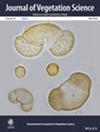How Does Fire Exclusion Affect the Belowground Biomass of Tropical Open Ecosystems?
Abstract
Aim
Belowground biomass, including roots and belowground bud-bearing organs, is crucial in tropical open ecosystems, particularly during post-fire regeneration. However, we still do not understand how variation in fire regime modulates the allocation of biomass in these belowground parts. In two distinct fire regimes, we investigated aboveground and belowground biomass, as well as the distribution of biomass and the composition of bud-bearing belowground organs in open tropical ecosystems.
Location
Five tropical open ecosystems in Brazil (from northern to southeast Brazil).
Methods
We assessed above- and belowground plant biomass across 100 plots (10 plots for each of the two treatment conditions i.e. frequently burnt and fire excluded, and at five sites in total). We sorted out biomass as live aboveground, belowground bud-bearing organs, coarse (> 2 mm) and fine roots (< 2 mm). Bud-bearing belowground organs were classified into morphological categories (e.g., xylopodia, woody rhizome and fleshy rhizome).
Results
Fire-excluded areas had a lower root-to-shoot ratio and lower total belowground-to-aboveground biomass allocation than areas frequently burnt. The total belowground biomass, as well as fine and coarse root biomass and belowground bud-bearing organ biomass, remained unchanged with fire exclusion. The composition of belowground bud-bearing organs changed towards organs with lateral spread, such as woody and fleshy rhizomes, when fire was excluded.
Conclusions
More than 10 years of fire exclusion did not affect the total belowground biomass but changed the composition of bud-bearing belowground organs in tropical open ecosystems. Even after 12 years of fire exclusion, bud-bearing belowground organs were still present in the community, ensuring resilience to fire even if they were not burned regularly.


 求助内容:
求助内容: 应助结果提醒方式:
应助结果提醒方式:


